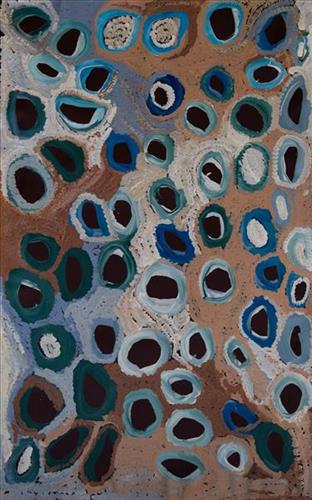111582079015
Yaralalu
Yaralalu is one of several fresh water sources located along the Karlamilyi River (Rudall River). This pool is located at the north eastern end of the river, just west of Nyayartakujarra (Lake Dora) and Punmu Aboriginal community. Plentiful gum trees and lunki (witchetty grub) are found at the site.
Karlamilyi River and its surrounds are Warnman Country, located in the very heart of the Martu homelands. The region is situated south west of the Great Sandy Desert and north east of the Little Sandy Desert. Spanning through the region is the epic Karlamilyi River, which runs north into Nyayartakujarra, a large and striking salt lake. The Broadhurst and Fingoon Ranges extend diagonally across the river’s path. The landscape is striking for its abundance of gorges and valleys carved by ice age glaciers, rugged cliffs, red tali (sand dunes), grasslands, sandstone and quartz rocky outcrops, and salt lakes.
According to two of the central Martu Jukurrpa (Dreaming) narratives, the Karlamilyi River and its surrounds were created by the ancestral beings Jila Kujarra (Two Snakes) and the Wati Kujarra (Two Goanna Men) as they travelled across the lands.




